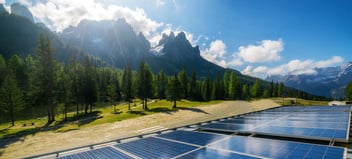Fact vs Myth: 3 Things We Know for Sure About Microgrids
There is much speculation about what exactly microgrids are, what they can do, and how they provide value. A Connected Microgrid ® is a distributed energy system that combines multiple energy sources to produce power on-site. A microgrid may consist of solar panels, wind turbines, generators, combined heat and power, or battery storage to provide electricity to customers. They’re typically near, on top of, or within the same building since electricity can lose power transiting from long distances. That’s why powering your business close to “home” covers you and your energy supply. Let’s unpack some common myths about microgrids below.
Myth: microgrids cost too much.
Fact: Microgrids help your business save money and are a more sustainable approach to managing your energy supply. Generally, there are numerous financing options for microgrids, whether working with potential investors or using incentives that directly support communities most affected by climate change. For example, when you sign up for a connected microgrid with Catalyst Power, you immediately save on upfront costs because we build, own, and operate everything for you. After you sign a power purchase agreement, we start building the on-site solar array or generator at no cost to you.
Myth: microgrids are only in case of emergency.
Fact: Microgrids offer a high level of sustainability and resilience alongside our larger grid. When we think about the volatility of our energy market or if the grid is being overloaded and stretched to capacity, it encourages us to reframe our thinking around the importance of microgrids. Connected microgrids bring more renewable energy, giving our grid more opportunities to withstand challenges. Communities, hospitals, airports, universities, and other large entities use systems like microgrids regularly. Yes, they keep us prepared for power outages, but they also support our everyday energy consumption.
Myth: the reliability of microgrids is unpredictable.
Fact: Microgrids have the opposite effect; they are resilient power sources in times of crisis. Since microgrids can operate independently, they provide backup support in the event of drastic weather changes like freezing temperatures, hurricanes, and severe storms—these are all circumstances that can leave thousands without any power for any length of time. The purpose of microgrids allows them to operate as an island apart from the main grid. It’s a self-sufficient system that brings distributed energy to its customers, protecting them from future grid failures. It supplements our power grid, not replace it.
Connected microgrids keep the stress off your back and the electric grid both in times of need and in regular everyday consumption. Talk to our customer care about your options and see how connecting to a microgrid through Catalyst Power can take your business’s energy strategy to the next level.


.jpg?width=352&name=Untitled%20design%20(61).jpg)
.jpg?width=352&name=Untitled%20design%20(75).jpg)